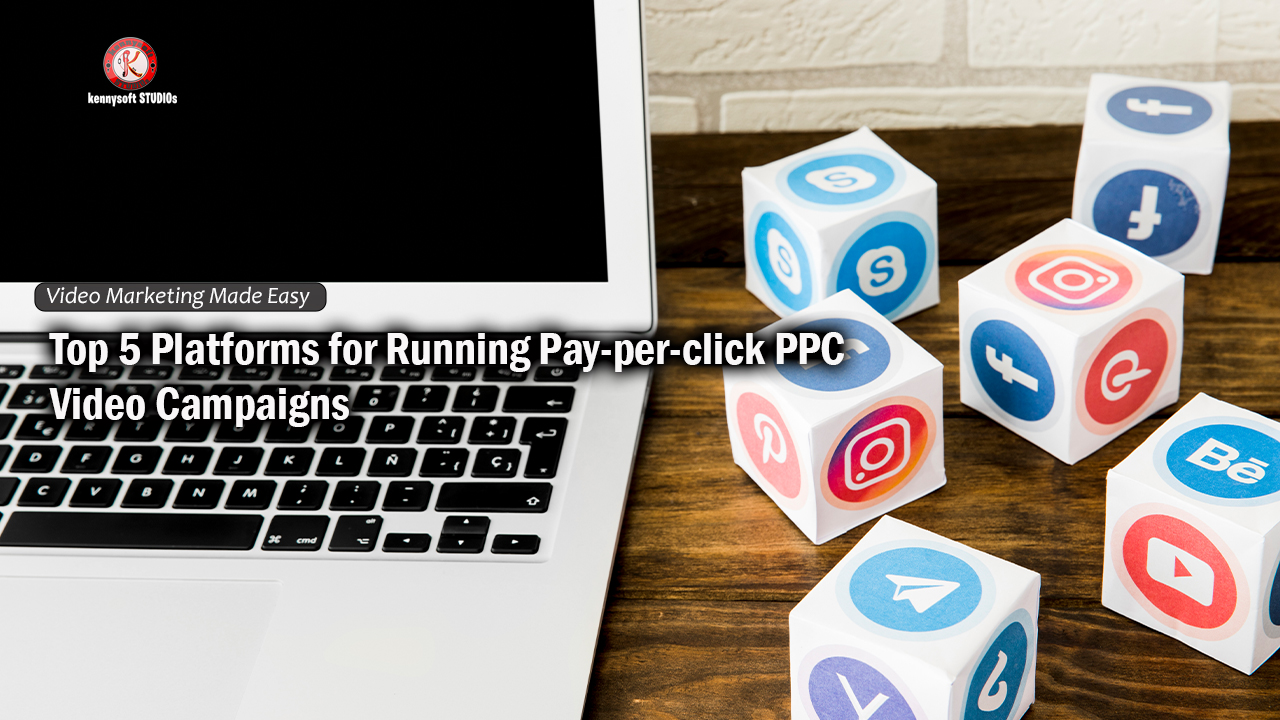With video campaigns on the go, it has emerged as a powerful tool for grabbing attention and driving actions. Pay per click (PPC) video campaigns are particularly effective, offering measurable returns on investment and a targeted approach to reaching potential customers.
Pay per click (PPC) video campaigns offer a Streamlined technique to digital advertising, allowing marketers to reach potential customers with unprecedented accuracy and efficiency.
However, with the wide range of platforms available, making the right choice can be overwhelming. This article explores some top platforms for running PPC video campaigns and provides their features, advantages and disadvantages to help marketers make informed decisions.
The different types of Pay per click (PPC) video platforms
1. YouTube Ads
YouTube, owned by Google, is one of the world’s largest video-sharing platform, is a natural choice for PPC video campaigns. With more than (2) two billion active users, YouTube provides unparalleled reach and audience engagement. YouTube reaches more 18–49-year-olds in an average week than all cable TV networks combined. Statistically, 70% of viewers have purchased a product after seeing a brand on YouTube. It works best for Brands looking to maximize visibility and engage a broad or niche audience.
Features
- Ad Formats: Skippable ads, non-skippable ads, bumper ads, and in-feed video ads.
- Targeting Options: Demographics, interests, keywords, and remarketing.
- Analytics: Comprehensive reporting with real-time performance metrics.
- Integration: Seamless integration with Google Ads for holistic campaign management.
Advantages
- Massive audience base.
- High engagement potential.
- Advanced targeting and integration with Google Ads.
Disadvantages
- Competitive bidding environment.
- High cost for certain keywords and niches.
- Steep learning curve for beginners.
2. Meta Ads (Facebook and Instagram)
As part of Meta’s ecosystem, Facebook and Instagram offer integrated advertising solutions that combine video campaigns with other ad formats to target users on both platforms. Facebook has over 2.8 billion monthly active users. Video posts have 135% greater organic reach than photo posts. 85% of Facebook users watch videos with the sound off, emphasizing the importance of captions. It works best for Small to medium-sized businesses focusing on B2C audiences and visual storytelling.
Features
- Ad Formats: Stories, reels, in-feed videos, and carousel ads.
- Targeting Options: Behavioral data, location, demographics, and lookalike audiences.
- Analytics: Detailed performance tracking through Meta Ads Manager.
- Cross-Platform Synergy: Advertisers can target users across Facebook, Instagram, and even Messenger.
Advantages
- Access to a highly engaged, visually driven audience.
- Seamless integration between Facebook and Instagram.
- Cost-effective options for smaller budgets.
Disadvantages
- Algorithm changes can impact campaign performance.
- Limited organic reach for unpaid posts.
- Saturation in certain niches leading to higher CPCs.
3. LinkedIn Ads
LinkedIn is the go-to platform for B2B marketers aiming to connect with professionals and decision-makers. LinkedIn has over 774 million users. Video content is 20 times more likely to be shared than other types of content on LinkedIn. 79% of video marketers consider LinkedIn an effective platform. It works best for B2B campaigns and industries focused on professional networking and services.
Features
- Ad Formats: Sponsored videos, in-feed ads, Sponsored InMail, and video carousel ads.
- Targeting Options: Industry, job title, company size, and seniority.
- Analytics: Performance metrics tailored to B2B campaigns.
- Content Integration: Allows integration with thought leadership content.
Advantages
- Precise targeting for professional audiences.
- Ideal for promoting thought leadership and industry-specific solutions.
- Higher engagement rates for B2B-focused content.
Disadvantages
- Higher cost per click compared to other platforms.
- Limited reach outside of professional circles.
- Requires well-crafted, professional content for maximum impact.
4. TikTok Ads
TikTok’s explosive growth has made it a valuable platform for reaching younger audiences through short-form video content. It works best for Brands targeting younger, trend-driven audiences with a knack for creativity.
Features
- Ad Formats: In-feed ads, branded effects, and TopView ads.
- Targeting Options: Age, gender, interests, and device type.
- Analytics: Insights into impressions, clicks, and conversions.
- Creative Tools: Offers tools like templates and effects to enhance video production.
Advantages
- High engagement rates.
- Creative ad formats tailored to short-form storytelling.
- Growing popularity among Gen Z and Millennials.
Disadvantages
- Limited appeal for older demographics.
- Requires a strong focus on creative and engaging content.
- Ad fatigue can occur quickly due to repetitive content styles.
5. Twitter Ads (Now X)
Twitter (now X) remains a dynamic platform for brands looking to drive conversations and real-time engagement. It works best for Brands aiming to build awareness or capitalize on trending topics.
Features
- Ad Formats: Promoted videos and in-stream video ads, trending topic integration.
- Targeting Options: Keywords, hashtags, followers, and custom audiences.
- Analytics: Real-time metrics for engagement and reach.
- Unique Selling Point: Enables participation in trending conversations and hashtags.
Advantages
- Ideal for real-time marketing.
- Engages audiences with trending topics and conversations.
- Short content lifecycle suits time-sensitive campaigns.
Disadvantages
- Limited long-form video capabilities.
- Lower conversion rates compared to other platforms.
- Less effective for visual storytelling.
Conclusion
Whether you are using YouTube ad, LinkedIn or any of these platforms, selecting the right PPC video platform isn’t about finding a universal solution—it’s about finding the right solution for your specific goals. Selecting the best platform for running your PPC video campaigns depends on your goals, audience, and budget. All these platforms; YouTube, Facebook and Instagram, LinkedIn, TikTok, Twitter (X) knowing their unique features can help you to streamline and create impactful video campaigns that deliver measurable results.
Remember, Investing time in understanding these platform will help you to make the right choice in streamlining your content. So, try, assess and adapt to what works best for you.
